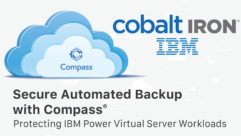Meeting Around the Virtual Water Cooler
May 24, 2007 12:00 AM,
By John McKeon
Ah, the office water cooler—the break room.
If any organization has figured out a more effective way to disseminate information, share ideas, and manage morale, they’ve kept it quiet. The almost continuous, impromptu interchanges that take place in these informal settings have long been the lifeblood of business.
But what if your colleagues are across town or around the globe? How can you recreate the collegiality of on-demand, face-to-face conferencing?
Some AV specialists, including integrators and providers of infrastructure resources, are promoting a solution. At SPL Integrated Solutions, for instance, they’re working on a notion that’s sometimes called the “Virtual Hallway,” and sometimes the “Virtual Lunchroom.”
The basic idea is that organizations should be able to leave their videoconference links open all the time, and users at any “node” of the system should be able to drop in unannounced, find their coworkers at other sites, chat, swap files, and do all of the things office workers have been doing around water coolers for as long as there have been office workers and water coolers.
Well, maybe not the Super Bowl pool, but lots of other things.
The key, of course, is cost. A relatively low-tech version of continuous conferencing has long been available, relying on desktop computers and standard Internet connectivity. Paul Foster, for example, is a teacher in the graphic communications program at Sollers Point Technical High School in Baltimore, Md. Recently, he has organized a nationwide network of peers who share an all-day, always-open conferencing link through a program called Yugma.
Yugma, Foster explains, is a Sanskrit word meaning the state of being in unified collaboration. Each morning, Foster opens the Yugma virtual hallway and his peers around the country sign in. Then, all day, they can swap lesson plans, ask questions, or just chat. But for Foster, the key value of Yugma is the very fact that it eschews the trappings of professional AV.
“If you go high-end AV, then you are limiting access because of the cost,” Foster says. “The beauty of the low-tech/low-cost way is that it is truly accessible to anyone anywhere with an Internet connection and a web browser.”
But if SPL and its allies have their way, this cost obstacle may soon fall. SPL has worked with Glowpoint, a Hillside, N.J.-based provider of IP network services, to fashion an approach to always-on conferencing that may fit the budgets of even very modest organizations.
”[The service] is becoming more and more popular. We have several clients who are using it to build camaraderie between East and West Coast offices, for example,” says Glowpoint’s Mike Fung.
Basically, customers using the Glowpoint national backbone can obtain what SPL’s Jeff Fink calls “literally unlimited T1 type bandwidth for around $800 per month.”
With a fixed-rate service, the unit cost of a conferencing hour, or minute, can get very low if the client uses the service enough, Fink says. “You can turn the system on Monday morning at eight and turn it off Friday at five, and stay connected all the time in between,” Fink says. “It’s a brilliant option for eye-to-eye communications at a very low cost.”
Actually, Fink says, SPL “is not really even pushing it.” But in the course of planning new conferencing facilities, or upgrades, the always-on virtual hallway option often appeals to clients as a relatively cheap, high-payback add-on. “It’s a relatively small incremental cost, as an add-on to a conference room plan, and the return on investment can climb dramatically.”










